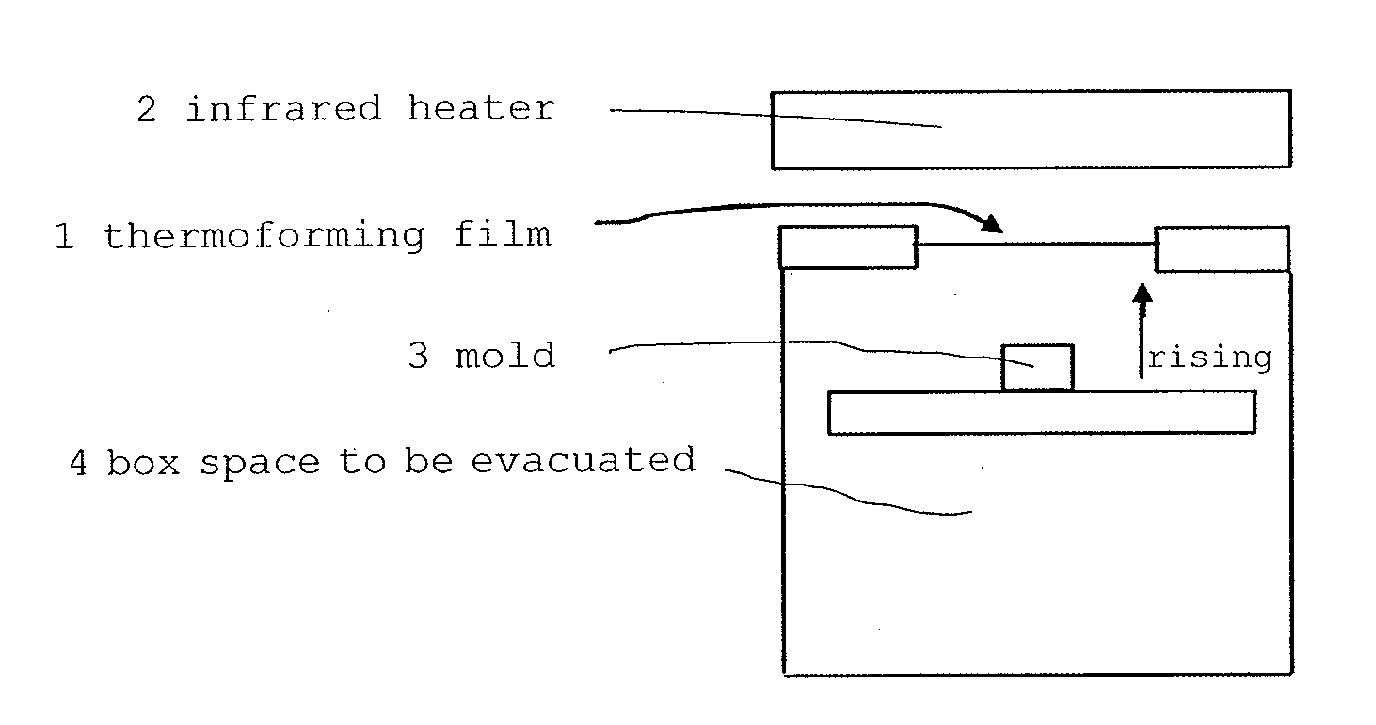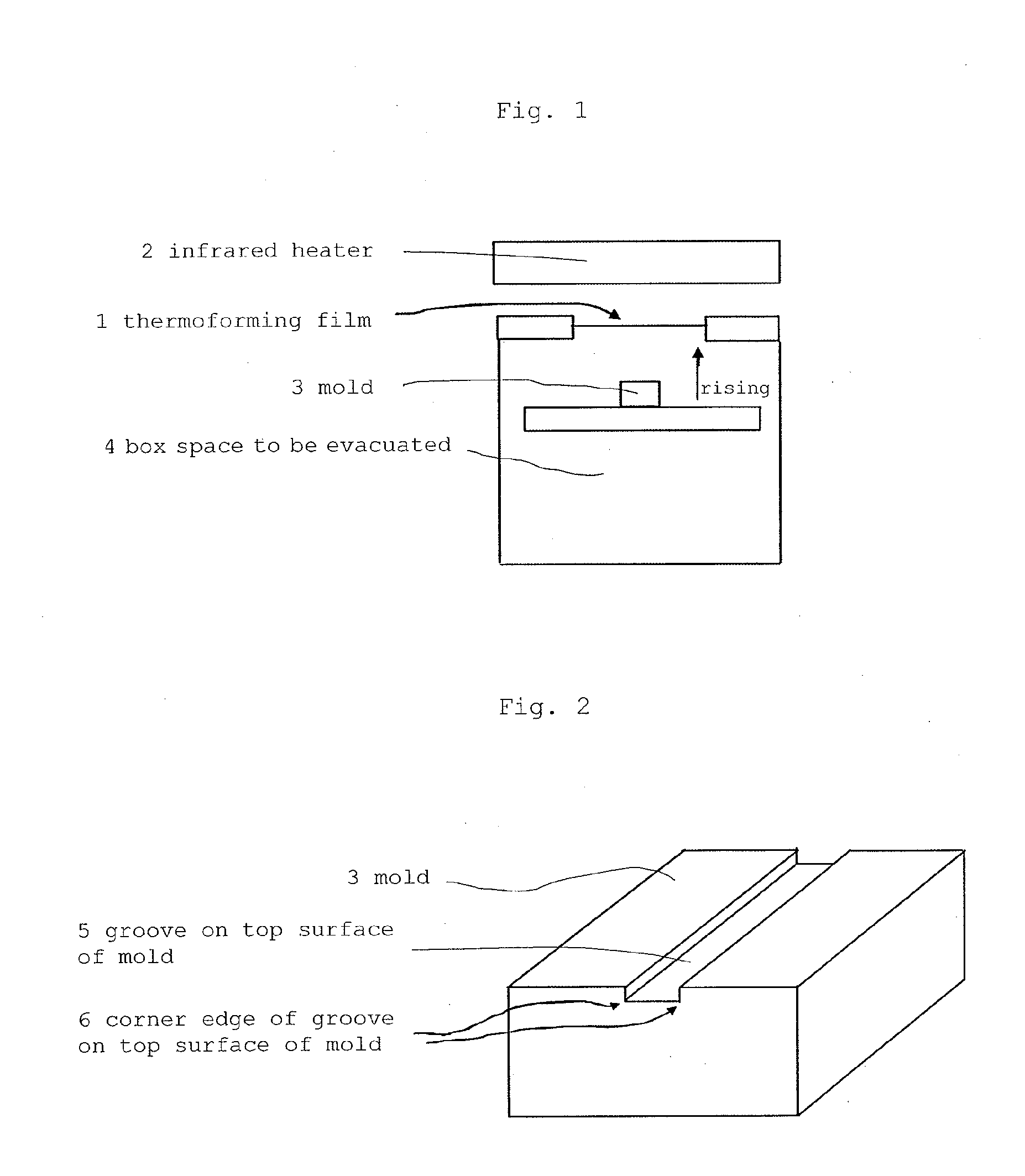Multi-layer film, decorative molding film and molded body
a technology of decorative molding and film, applied in the field of multi-layer film, decorative molding film and molded body, can solve the problems of unsatisfactory toughness of acrylic film, limitation of the application of acrylic film in fields which require high heat resistance, and inability to meet all the above requirements, etc., to achieve excellent toughness, transparency and surface hardness, and hardly produces uneven thickness.
- Summary
- Abstract
- Description
- Claims
- Application Information
AI Technical Summary
Benefits of technology
Problems solved by technology
Method used
Image
Examples
preparation example 1
Production of Polyester-Based Thermoplastic Elastomer
[0102]175 parts by weight of dimethyl isophthalate, 23 parts by weigh of dimethyl sebacate and 140 parts by weight of hexamethylene glycol were transesterified by using a dibutyltin diacetate catalyst and the transesterified product was polycondensed under reduced pressure to obtain an amorphous polyester (soft segment) having an intrinsic viscosity of 1.06 and showing no heat absorption peak caused by the melting of a crystal when measured by DSC.
[0103]107 parts of a dry pellet (hard segment) of polybutylene terephthalate having an intrinsic viscosity of 0.98 which was obtained by polycondensation separately was added to this polyester and reacted with the polyester at 240° C. for 45 minutes, and 0.1 part of phenylphosphonic acid was added to terminate the reaction. The obtained polymer had a melting point of 190° C. and an intrinsic viscosity of 0.93.
example 1
Molding Material A
[0104]A polycarbonate resin pellet (Panlite L-1250 of Teijin Chemicals Ltd., viscosity average molecular weight of 23,700) and the polyester-based thermoplastic elastomer produced above were pre-dried and mixed together in a weight ratio of 90 / 10 (100 / 11.1) (parts by weight) by means of a twin-cylinder mixer, and the resulting mixture was extruded at a cylinder temperature of 260° C. by means of a double-screw extruder to be pelletized so as to obtain the molding material A for the layer A. The glass transition temperature of the molding material A was 111° C.
Molding Material B
[0105]An acrylic resin (Acrypet VH001 of Mitsubishi Rayon Co., Ltd.; standard grade) was prepared as the molding material B for the layer B.
Co-Extrusion
[0106]The molding material A and the molding material B were each extruded from a T die having a width of 650 mm in accordance with feed-block system at cylinder temperatures of 260° C. (molding material A) and 250° C. (molding material B) by ...
example 2
[0108]Film formation was carried out to obtain a multi-layer film having a total thickness of 134 μm in the same manner as in Example 1 except that the molding material B was changed to the Acrypet IRG304 (impact resistant grade) of Mitsubishi Rayon Co., Ltd. and the thickness ratio of layers and the take-up speed were changed. The physical properties of the film are shown in Table 1. Thermoformability and toughness were satisfactory as in Example 1.
PUM
| Property | Measurement | Unit |
|---|---|---|
| Thickness | aaaaa | aaaaa |
| Haze | aaaaa | aaaaa |
| Length | aaaaa | aaaaa |
Abstract
Description
Claims
Application Information
 Login to View More
Login to View More - R&D
- Intellectual Property
- Life Sciences
- Materials
- Tech Scout
- Unparalleled Data Quality
- Higher Quality Content
- 60% Fewer Hallucinations
Browse by: Latest US Patents, China's latest patents, Technical Efficacy Thesaurus, Application Domain, Technology Topic, Popular Technical Reports.
© 2025 PatSnap. All rights reserved.Legal|Privacy policy|Modern Slavery Act Transparency Statement|Sitemap|About US| Contact US: help@patsnap.com


